Embracing the elements is a fundamental part of a construction worker's job. Come rain or shine, projects need to progress, and deadlines have to be met. Enter rain gear - the unsung hero in the arsenal of a construction worker, keeping them safe and dry, no matter how tough the weather conditions may be. This article spotlights the importance of rain gear for construction workers, the essential features to look out for, and the versatile types available today. Besides keeping them dry, the right rain gear can considerably enhance visibility, performance, and most importantly, safety on the job. Let's get ready to explore a wiser, drier world of construction work.
The Importance of Rain Gear for Construction Workers
Crafting buildings out from blueprints and transforming landscapes across cities everywhere, construction workers perform some of the most physically demanding tasks out there. Even under the most adverse weather conditions, the job doesn't stop. That’s why wearing proper rain gear is a non-negotiable aspect of this line of work.
There's no sidestepping around the fact that working in the rain is uncomfortable, but for construction workers, it can also be downright harmful if not adequately prepared. Water can make surfaces slippery, increase the risk of equipment failure, and cause a general decrease in worker productivity due to discomfort.
By ensuring that construction workers are outfitted with high-quality rainwear, they not only remain dry but can also stay safe and focused on the job. Let’s breakdown why rain gear is so crucial.
- Preventing Hypothermia: When a worker becomes wet in cold conditions, the body rapidly loses heat, increasing the risk of hypothermia. High-quality rain gear keeps workers dry, reducing this risk substantially.
- Preventing Injuries: Rain can make surfaces slippery, thus increasing the risk of trips, slips, and falls—the leading cause of injuries in construction work. Proper rainwear allows workers to move freely on wet surfaces, reducing the likelihood of such accidents.
- Maintaining Productivity: By feeling dry and comfortable, workers can give their best on the job site, irrespective of the weather conditions.
The arduous conditions under which construction workers labor require their rain gear not to be only watertight but well-ventilated. The best rain gear should include ventilation in areas prone to sweating such as the armpits and back. This ensures their user stays dry, not just from rain, but also from excessive sweating.
To say that rain gear is essential for construction workers is an understatement. It's virtually their second skin in adverse weather conditions. It maintains their comfort, ensures their safety, and enables them to sustain their productivity. Let's remember, without them, our cities and homes wouldn't be the same. After all, isn't that worth staying dry for?
Essential Features of Rain Gear for Construction Workers
The right construction gear enhances productivity, keeps workers safe, and promotes better working conditions. When it comes to construction work in wet conditions, rain gear is indispensable. But not all rain equipment is the same. By focusing on key features – ventilation, waterproofing, and durability – construction workers can navigate the rain with more security and less discomfort. Here's what to look for when selecting rain gear for construction work.
Ventilation
Ventilation in rain gear is an essential feature that is often overlooked. It’s not enough for rain gear just to keep the rain out. It also needs to prevent the worker from overheating and excessive sweating, which can leave them just as wet and uncomfortable as if they had no gear at all. Not to mention, excessive sweating could lead to dehydration.
- Look for rain gear with underarm venting systems and breathable fabrics that wick away moisture.
- Consider gear that features dual-access front pockets, which can provide additional ventilation.
- Picking gear with full-cut sizes ensures an ease of movement and promotes airflow, adding to ventilation.
Waterproof
Of course, the primary function of rain gear is to protect the worker from the elements, predominantly water. Therefore, being waterproof is a non-negotiable feature of any good piece of rain gear.
- Seek rain gear made of materials that have a high water-resistance rating.
- Look for features such as sealed seams and waterproof zippers that prevent water ingress.
- A good piece of rain gear should have a hood of some kind, ideally adjustable and detachable for optimum flexibility.
Durability
Rain gear for construction work is exposed to rough conditions, so it needs to be durable. Gear that wears out quickly is not only inconvenient but also a potential safety hazard. Durability is a top priority.
- Opt for gear made from durable materials like PVC or coated fabrics.
- Rain gear with reinforcement in high-wear areas, such as the knees and elbows, will greatly enhance its lifespan.
- Look for gear with heavy-duty fasteners and sturdy zippers to ensure it can withstand the rigors of construction work.
In their quest to stay dry, construction workers should not overlook these vital criteria. Effective rain gear is more than just a waterproof shield; it's a high-performing tool that enhances safety, comfort, and productivity, whatever the weather.
Types of Rain Gear for Construction Workers
Understanding the importance of rain gear in the construction industry is a must. Whether you are working in light showers or heavy downpours, protecting yourself from inclement weather can greatly impact your productivity, safety, and overall well-being. But not every type of rain gear is made alike; there are several different types to choose from, depending on your needs and work environment. Here are some of the most commonly used types of rain gear for construction workers:
Heavy-Duty Rain Gear
For those working in harsh and demanding conditions, heavy-duty rain gear provides superior waterproofing and durability. These pieces, designed to withstand intense weather conditions, rely on heavy materials capable of enduring prolonged exposure to water and mud.
Urethane Rain Gear
Urethane rain gear offers an excellent balance of durability and flexibility. This type is especially popular because it’s lightweight and comfortable, making it a go-to choice for construction workers in wet climates.
Waterproof and Bone-Dry Rain Jacket
Water-resisting and bone-dry rain jackets ensure that construction workers remain dry during rainfall. Jackets such as these offer maximum water-protection, doing away with dampness that often causes discomfort and distraction at work. Not to mention, some rain jackets also come with a thermal lining to provide warmth in colder climates.
Recommended Budget Rain Gear
For budget-conscious workers, the North Face Dryzzle FUTURELIGHT Jacket is a fantastic option. It offers superb performance, durability, and water-resistance at a significantly lower cost than other high-end brands.
Raincoat and Rain Bib Overalls
Raincoat and bib overall combos provide full-body protection against the elements. They keep the worker comfortably dry, allowing for more focused and efficient work, regardless of the weather.
PVC-Coated Rain Jackets
PVC-coated rain jackets such as the Carhartt Raincoat for Construction are known for their durability and waterproof properties. They offer terrific protection against the rain, all while ensuring the wearer stays comfortable and dry.
High Visibility Rain Jackets
Workers who operate on busy sites could benefit from high visibility rain jackets. For instance, the JORESTECH High visibility rain jacket is ANSI/ISEA 107-2015 Class 3 Level 2 compliant, thereby significantly enhancing worker safety in low-light conditions.
Breathable Nylon and Polyester Rain Gear
Finally, breathable nylon and polyester rain gear is a popular choice among construction workers. These materials allow for enhanced airflow, preventing overheating while concurrently providing sufficient rain coverage. Viking, a known brand in the industry, is globally recognized for producing high-quality, durable wet weather gear.
Choosing the right rain gear for your needs comes down to the nature of your work, the conditions you work in, and, of course, your personal preferences. Regardless of the type you choose, the key is to ensure it provides adequate protection against the elements, high visibility in low-light conditions, and enough breathability to keep you comfortable throughout your workday. Always remember, the right rain gear not only keeps you dry but also significantly impacts on-site safety and your overall productivity.
Conclusion
Choosing the right rain gear isn't just about comfort, it plays a crucial role in the overall safety and productivity of construction workers. When you're armed with the right gear, you can concentrate on the job at hand no matter what the weather throws at you. Ensure you select rain gear that offers maximum waterproof protection, great durability, and essential features like ventilation.
For a choice that checks all these boxes, consider Hurricane Raingear. Offering 100% waterproof and rip-resistant products, made with quality North-American-Made materials and unmatched craftsmanship, Hurricane Raingear ensures your comfort and safety even in the toughest weather conditions. With Hurricane Raingear, handle any weather with confidence and continue giving your best at work, every day.
Frequently Asked Questions
-
What are the essential rain gear items for construction workers?
The essential rain gear items for construction workers include waterproof jackets, pants, boots, gloves, and hats. It is also recommended to have high-visibility rain gear to ensure safety.
-
Why is rain gear important for construction workers?
Rain gear is important for construction workers as it helps protect them from the elements, keeping them dry and comfortable. It also helps prevent accidents by providing better visibility and reducing the risk of slips and falls caused by wet surfaces.
-
What features should I look for in waterproof jackets and pants for construction work?
When choosing waterproof jackets and pants for construction work, look for durable materials, such as nylon or polyester with waterproof coatings. Additionally, consider features like sealed seams, adjustable cuffs and hoods, and ample pockets for storing tools and equipment.
-
Are there specific safety standards for rain gear for construction workers?
Yes, there are specific safety standards for rain gear, such as ANSI/ISEA 107 for high-visibility apparel. It is recommended to choose rain gear that meets these standards to ensure maximum safety on construction sites.
-
How often should rain gear for construction workers be replaced?
The lifespan of rain gear depends on factors like usage frequency and maintenance. Generally, it is recommended to replace rain gear every 1-2 years or when signs of wear and tear, such as rips or compromised waterproofing, start to appear.



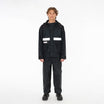



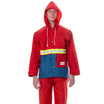


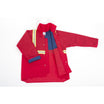

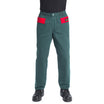



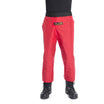






Leave a comment
This site is protected by hCaptcha and the hCaptcha Privacy Policy and Terms of Service apply.